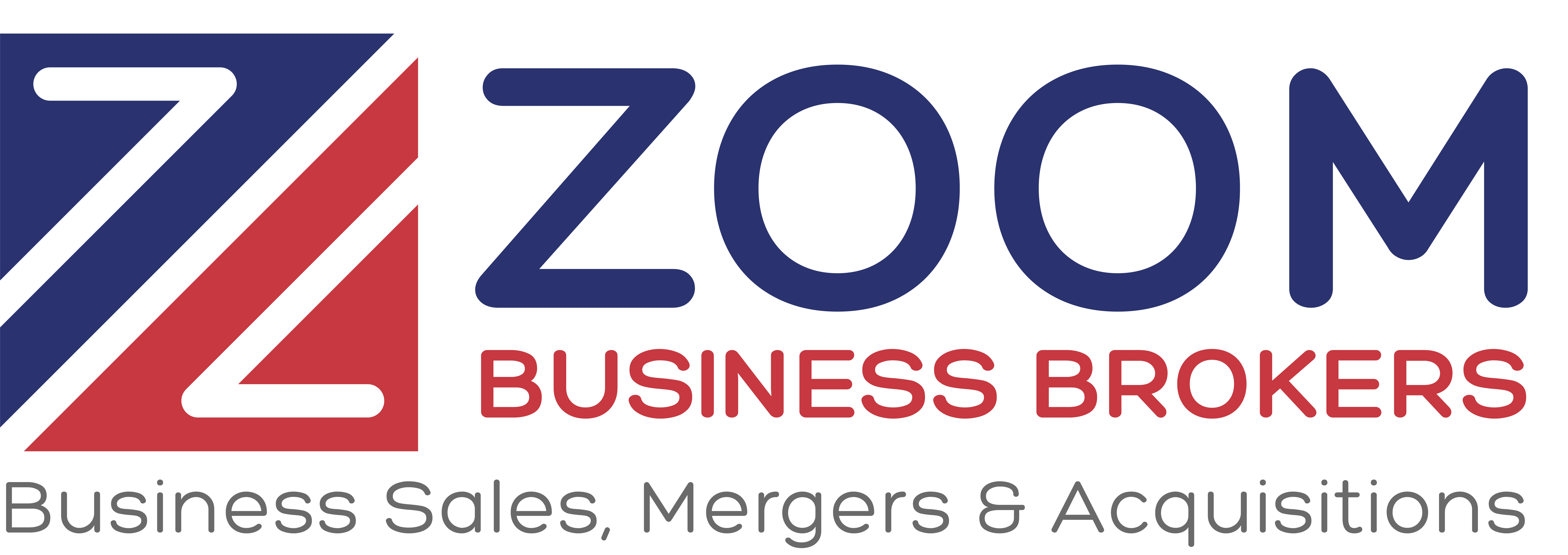
Your Deal is Almost Done, Then Again, Maybe Not
Having a letter of intent signed by both the buyer and the seller can be a very good feeling. Everything can seem as though it is moving along just fine, but the due diligence process must still be completed. It is during due diligence that a seller decides whether he or she is going to finalize the deal. Much depends on what is discovered during this important process, so remember the deal isn’t done until it is truly finalized.
In his book, The Art of M&A, Stanley Forster Reed noted that the purpose of due diligence is to “Assess the benefits and liabilities of a proposed acquisition by inquiring into all relevant aspects of the past, present and predictable future of the business to be purchased.”
Summed up another way, due diligence is quite comprehensive. It probably comes as no surprise that this is when deals often fall apart. Before diving in, it is critically important that you meet with such key people as appraisers, accountants, lawyers, a marketing team and other key people.
Let’s take a look at some of the main items that both buyers and sellers should have on their respective checklists.
Industry Structure
You should determine the percentage of sales by product line. Additionally, take the time to review pricing policies, product warranties and check against industry guidelines.
Human Resources
Review your key people and determine what kind of employee turnover is likely.
Manufacturing
If your business is involved in manufacturing then every aspect of the manufacturing process must be evaluated. Is the facility efficient? How old is the equipment? What is the equipment worth? Who are the key suppliers? How reliable will those suppliers be in the future?
Trademarks, Patents and Copyrights
Trademarks, patents and copyrights are intangible assets and it is important to know if those assets will be transferred. Intangible assets can be the key assets of a business.
Operations
Operations is key, so you’ll want to review all current financial statements and compare those statements to the budget. You’ll also want to check all incoming sales and at the same time analyze both the backlog and the prospects for future sales.
Environmental Issues
Environmental issues are often overlooked, but they can be very problematic. Issues such as lead paint and asbestos as well as ground and water contamination can all lead to time-consuming and costly fixes.
Marketing
Have a list of major customers ready. You’ll want to have a sales breakdown by region and country as well. If possible, you’ll want to compare your company’s market share with that of the competition.
The Balance Sheet
Accounts receivable will want to check for who is paying and who isn’t. If there is bad debt, it is vital to find that debt. Inventory should also be checked for work-in-progress as well as finished goods. Non-usable inventory, the policy for returns and the policy for write-offs should all be documented.
Finally, when buying or selling a business, it is vital that you understand what is for sale, what is not for sale and what is included whether it is machinery or intangible assets such as intellectual property. Understanding the barriers to entry, the company’s competitive advantage and what key agreements with employees and suppliers are already in place, will help ensure a smooth and stable transition. There are many important questions that must be answered during the due diligence process. Working closely with a business broker helps to ensure that none of these vital questions are overlooked.
Copyright: Business Brokerage Press, Inc.
Read More
Around the Web: A Month in Summary
A recent article from Small Business Trends entitled “41% of Entrepreneurs Will Leave Their Small Business Behind in 5 Years” summarizes a report by a global financial services firm that looks at business ownership and entrepreneurialism in modern America. The report found that almost 60% of wealthy investors would consider starting their own business while more than 40 percent of current business owners are planning to exit their business. Of the 41% of business owners who are planning to leave their business in the next 5 years, half of them plan to sell their business.
The report highlights how heirs in the family are often reluctant to take over the family business and that many business owners underestimate what they need to reach a successful sale. The report notes that 58% of business owners have never had their business appraised and 48% have no formal exit strategy. One of the main takeaways from this should be that small business owners need to prepare for selling their business and they should create an exit plan well in advance.
Click here to read the full article.
A recent article on the Axial Forum entitled “9 Reasons Acquisitions Fail — and How to Beat the Odds” shows us how looking at why others have failed can help you to learn from their mistakes in order to have a successful acquisition. Here are 9 common causes of failed acquisitions:
- Strategy – Poor strategic logic was used and it was not a good fit for integration
- Synergy – Potential synergy between the companies is overestimated or the complexity is underestimated
- Culture – Incompatibility between the companies, ineffective integration, or compromising the positive aspects of one business to create uniformity
- Leadership – Poor leadership, not enough participation in the transaction & integration process, clashes between leaders
- Transaction Parameters – Paying too much, inappropriate deal structure, negotiations taking too long
- Due Diligence – Not enough investigation is done beforehand, failure to act on findings
- Communications – Lack of proper communication can result in talent loss, customer loss, and many more problems which eventually lead to failure
- Key Talent – Failing to identify or retain key employees
- Technology – Failing to identify incompatibilities or underestimating the complexity and time required for integration
Integration involves several steps starting from the initial strategic thinking, to due diligence and then carrying on into the months after the deal is made. Deal makers and business owners need to consider all steps of the process to make an acquisition successful.
Click here to read the full article.
A recent article posted by WilmingtonBiz Insights entitled “How Does Exit Planning Protect Business Value?” explains the importance of exit planning in retaining and growing business value.
The article gives an example of two similar businesses, both valued at $5 million, who take different strategies towards increasing their companies’ values before selling. The first company invests in more equipment and hiring more employees, but does not work with any advisors besides their CPA at tax time. The second company works with their CPA, an exit planning advisor and a tax specialist. They build a strong management team, cut the owner’s work week in half, and convert the company to an S corporation. They also work with a business broker to buy two smaller competitors which broadens their market.
When the Great Recession of 2008 hits, both companies are affected but in very different ways. The first company has to lay off all the new employees they hired and their new equipment sits unused. They end up selling their business for less than what it was valued at. The second company has minimal layoffs and has extra money saved from strategic tax planning. Their business is valued at $15 million because of the two businesses they bought, and they are able to exit their business with $10 million profit. No matter what unforeseen circumstances may occur, the right planning can make a huge difference.
Click here to read the full article.
A recent article from Divestopedia entitled “Constructing a Buyer List and Finding the Right Buyer for Your Company” explains how buyer lists are created and what makes a good buyer. The first step in constructing the buyer list is to determine the objectives of the seller such as leaving a legacy or retaining the local employment base.
M&A advisors will have many existing resources to start with including an in-house database, established relationships in the industry, business networks, and more. Adding your competitors to the list is another thing to consider, which will depend on the goals of the seller and the reputation of the competitors.
The ability to pay is the main qualifier to look at in finding a good buyer. Consider the following factors when looking for a buyer who can pay a premium:
- Economies of scale
- Economies of scope and cross-selling opportunities
- Unlocking underutilized assets
- Access to proprietary technology
- Increased market power
- Shoring up weaknesses in key business areas
- Synergy
- Geographical or other diversification
- Providing an opportunistic work environment for key talent
- To reach critical mass for an IPO or achieve post-IPO full value
- Vertical integration
The best way to find the right buyer is to approach all potential buyers, talk to them and see if it’s a good fit.
Click here to read the full article.
A recent article from Business Sale Report entitled “Almost a quarter launch businesses with a sale in mind” summarizes the results of a new study which asked nearly 1,000 entrepreneurs about their start-up history and their motivation for launching businesses. The study found that 23% of those starting their own business have their exit as a primary goal, with 83% of those claiming that selling at a profit is their main incentive.
The top 2 answers for why they started their business were that “It was a passion of mine” and “I knew it would eventually sell well and had exit in mind.” All of the study participants said that they wished they had an exact way to know the value of their business and more than half said they had no real way of knowing the value of their business.
If you are starting a business with a main goal of selling the business for profit, it is essential to know your valuation so that you get a fair price.
Click here to read the full article.
Copyright: Business Brokerage Press, Inc.
Read More
Three Easy & Effective Ways to Negotiate
Far too many prospective business buyers and sellers overlook just how important negotiations can be. But they can also be tricky. In general, there are three approaches to negotiations. Thinking through your negotiation strategies well before the time to buy or sell is a savvy and prudent move.
Negotiation Tactic #1 Take It or Just Leave It
In this negotiating tactic, the buyer makes an offer and the seller makes a counter-offer, then both sides leave it there. If the deal works fine. If it doesn’t work, that’s fine too.
It is usually smart to step back and ask yourself if you are comfortable with this approach. Sometimes a small degree of flexibility can go a long way towards turning a proposed deal into a reality.
Negotiation Tactic #2 Maybe Consider Splitting the Difference
Another negotiating tactic is to simply offer to split the difference. This tactic is pretty straightforward and it demonstrates a good deal of flexibility; however, the financials may not always make sense for both sides.
As always, it is important to think about all the factors involved in allowing a deal to fall apart, such as how much time will it take to find another buyer or another business to buy? Showing a willingness to split the difference is often seen as a goodwill offer that can facilitate further negotiations within an environment of lower emotional intensity.
Remember, as long as the two sides are talking, a deal may be reached. But when communication ceases, then the deal is definitely finished and not in a good way.
Negotiation Tactic #3 Negotiation from What is Most Important to Each Party
Understanding what is most important to both parties is usually critical for a successful deal. Important areas can range from allowing a relative to stay with the business to moving the business to a new location. Not all key points are directly linked to money, and it is vital to understand this all-important negotiating fact.
Negotiation Tactic #4 Bring in a Pro
In negotiations there is an old adage, “Never negotiate your own deal.” Emotions can run high when it comes to buying or selling a business and then there is the problem of perspective. Buyers and sellers are often lack the perspective that an outsider can bring.
Opting for help and guidance from someone who buys and sells businesses for a living, can be a huge step in the right direction. Through a professional business broker, it is possible to not only establish a fair price but also address the array of intangibles that can go into buying and selling a business.
At the end of the day, deals are put together piece by piece, and skill is involved in the process. Working with others is at the heart of successful negotiation, and that means taking into consideration what the other side wants and what the other side needs.
Copyright: Business Brokerage Press, Inc.
Read More
Red Flags are Not a Pretty Sight
When it comes to selling a business, sellers simply must pay attention to red flags. Problems can always pop up, and that’s why they need to keep their eyes open.
Rarely does a “white knight” ride in and rescue a business with no questions asked. And if this were to happen, you should be asking, “Why?” Until a deal is officially inked, sellers need to evaluate every aspect of a transaction to make sure something isn’t happening that could wreck the deal.
Common Red Flags to Watch For
One example would be having a company express interest in your business but you are never able to directly contact key players, such as the President or CEO. The reason that this is a red flag is that it indicates that the interest level may not be as great as you initially hoped.
A second red flag example would be an individual buyer, with no experience in acquisitions or experience in your industry, looking to buy your business. The reason that this second example could prove problematic, is that even if the inexperienced buyer is enthusiastic as the deal progresses, he or she may become nervous upon learning what a deal would actually entail. In other words, the specifics and the reality of owning a business, or owning a business in your industry, could come as a shock to an inexperienced buyer.
Both of these examples above are examples of early-stage red flags. But what about issues that pop up at later stages? The simple fact is that red flags can come at any stage of the selling process.
A good example of a middle-stage red flag is when a seller is denied access to the buyer’s financial statements, which is of course essential to verify that the seller is able to actually make the acquisition. A final-stage red flag example is an apparent loss of momentum, as the buying and selling process can be a long one.
Business Sellers Need to Protect Their Assets
Sellers are usually very busy and don’t have time to waste; this is doubly true for owner/operators of businesses, as the time they invest with a prospective buyer is time that could be spent doing something else.
All too often, businesses begin to run into trouble when they place their business on the market. If this trouble negatively impacts the bottom line, then the business can become more difficult to sell and the final sale price will likely be lower.
That’s why it is so essential that sellers protect themselves from buyers that are not truly interested or are simply not a good fit. Working with a business broker is an easy and highly effective way for sellers to protect themselves from buyers that are simply not the right fit. A broker helps to “weed out” unfit candidates.
While red flags are never good, that doesn’t mean that a red flag means a deal is a definitely at an end. Especially with the guidance of an experienced business broker, many of these issues can be overcome.
In the end, if you, either as a buyer or seller, suspect that there is a problem, then you should take action. The problem will not simply go away. The single best way to deal with a red flag is to tackle it head on as soon as you recognize it.
Copyright: Business Brokerage Press, Inc.
Read More
Buying? Selling? Seven Key Points to Consider
Buying or selling a business is one of the most important decisions that most people ever make. Before jumping in, there are several points that should be taken into consideration. Let’s take a moment to examine some of the key points involved in buying or selling a business.
Factor #1 – What are You Selling?
Whether buying or selling a business it is important to ask a few simple questions. What is for sale? What is not included with the buyer’s investment? Does the sale price include any real estate? Are vital assets, such as machinery, included in the sale price?
Factor # 2 – What are the Range of Assets?
It is very important to understand the range of assets that are included with a business. What is proprietary? Are there formulations, patents and software involved? These types of assets are often the core of the business and will be essential for its long-term success.
Factor # 3 – Evaluating Assets for Profitability
Not all assets are created equally. If assets are not earning money or are too expensive to maintain, then they should probably be sold. Determining which assets are a “drag” on a business’s bottom line takes due diligence and a degree of focus, but it is an important step and one that shouldn’t be overlooked.
Factor # 4 – Determining Competitive Advantage
What gives a business a competitive advantage? And for those looking to sell a business, if your business doesn’t have a competitive advantage, what can you do to give it an advantage? Buyers should understand where a business’s competitive advantage lies and how they can best exploit that advantage moving forward.
Factor # 5 – How Can the Business Be Grown?
Both buyers and sellers alike should strive to determine how a business can be grown. Sellers don’t necessarily need to have implemented business growth strategies upon placing a business up for sale, but they should be prepared to provide prospective buyers with ideas and potential strategies. If a business can’t be grown this is, of course, a factor that should be weighed very carefully.
Factor # 6 – Working Capital
Some businesses are far more capital intensive than others. Understand how much working capital you’ll need to run any prospective business.
Factor # 7 – Management Depth
Businesses are only as good as their people. It is important to ask just how deep your management team is, how experienced that team is and what you can expect from that team. How dependent is the business on the owner or manager? If the business may fall apart upon the leaving of the owner or a manager, then this is a fact you need to know.
Buying or selling a business is often more complex than people initially believe. There are many variables that must be taken into consideration, including a range of other factors not discussed in this article ranging from how financial reporting is undertaken to barriers of entry, labor relationships and more. Due diligence, asking the right questions and patience are all key in making your business a more attractive asset to buyers or for finding the right business for you.
Copyright: Business Brokerage Press, Inc.
Read More